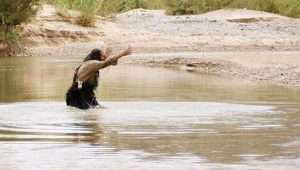Sending the disciples to preach to “the lost sheep of the house of Israel,” Jesus wants them to travel light reminding us of the two spies going off into the Land, or the Israelites girding their loins ready to leave on Passover with utmost simplicity.
For this mission, his disciples were to carry no money, neither the gold nor silver minted by the imperial Roman government, and not even the copper coins of the local princes and cities.
Money was normally carried in a girdle (zona in Greek, translated here “purse”), as was usual in antiquity. They were also not even to carry a pouch which was for food (pera in Greek, here translated “bag”).
The “second tunic,” khiton in the Greek, they were not to carry refers to the inner cloth worn by 1st century Jews and Greeks who usually wore and outer two garments, an outer himaton or a mantle draped over the under tunic. The outer mantle could serve as the only clothing and was often worn this way...
Become a Member
-
Read all member content
Get exclusive in-depth reports from Israel.
-
Get exclusive in-depth reports from Israel
Connect with Israel, right from your home.
-
Lift up the voice of truth and hope
Support Jerusalem-based Zionist journalism.

Already a member? Login here.















